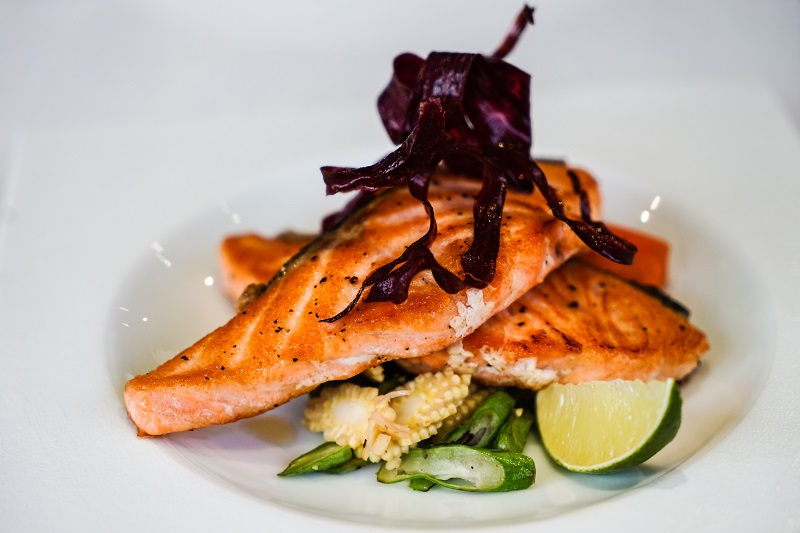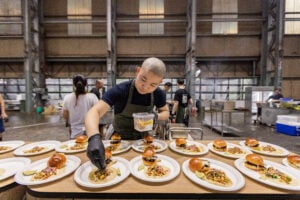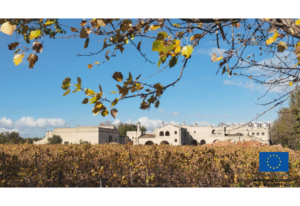A look into Taiwan’s fascinating food culture
“Tell me what you eat and I will tell you who you are,” wrote 19th century gastronome Jean Anthelme Brillat-Savarin. So it is that I find myself in Taiwan, the home of bubble tea and instant noodles, the world’s lowest fertility rates and highest math scores, in a quest to eat my way to a better understanding of this intriguing island nation.
I begin my mission in the shadow of Taipei 101, at the 2017 Taiwan Culinary Exhibition. There, amongst Papuan warriors in full face paint, an avalanche of colorfully wrapped pineapple cakes and 800 raucous exhibitors, I meet up with Ms. Lee Mei, Director of the Department of Commerce. “Taiwanese food is just so unique, inherited from traditional Chinese cuisine with a touch of Japanese influences and using local ingredients very creatively”, she says. When pressed for her top three dishes that every visitor should try, she responds rather surprisingly with braised pork over rice, beef noodles and rice porridge—some of the humblest, simplest comfort food around.

Once voted the top food destination on the planet in a somewhat controversial 2015 CNN reader poll beating out the likes of Italy, Japan and France, I have a feeling there’s more to Taiwan’s food scene than just bubble tea and rice porridge, evidenced by the USD2.3 billion that tourists spent on food here last year. As a guest of the “Old Restaurant Story Marketing Program” organized by the Department of Commerce, Ministry of Economic Affairs, I set off on a two-city, three-day, 10-restaurant whirlwind culinary tour of Taiwan to see what this little-known cuisine has to offer.
Children of the Sweet Potato
The tuber-shaped island of Taiwan has a total area of just over 36,000 sq km, putting it somewhere between Belgium and the Netherlands in size. Dominated by five rugged mountain ranges in the east, 90 percent of the population lives on the island’s west side, leaving less than a quarter of the island for farming. Even so, subtropical Taiwan proves true to its moniker of “Ilha Formosa” or “Beautiful Island,” a name given to the heavily forested island by Portuguese sailors in the mid 16th century, which now produces a cornucopia of tea, fruits, vegetables and more rice than its citizens can eat.
In Taichung, Taiwan’s third largest city, we stop in at Giverny’s Kitchen, a small, cheery restaurant decorated in old-timey clocks and French country aesthetics. Open for 23 years, it’s dominated by a massive chef’s table with a built-in range where Chef Yang cooks everything to order as diners crowd around. We sip on red cabbage juice with pineapple, apple and lemon while he carries on a running commentary on what he’s doing—sous viding the duck breast to seal in the moisture, flash cooking mushrooms to retain their flavor and steaming shrimp in a dash of white wine. “We’re all about teaching our customers about ingredients and cooking techniques,” says owner Debbie Lo. Modern life is busy, so people got used to adding MSG and instant seasoning to food, but I think we’re in the middle of a food revolution. People now want to know what they’re eating,” she says as she delicately arranges baby corn, panfried salmon and sweet potato chips onto a plate. “Taiwan produces such beautiful products that you don’t need to add a lot of heavy sauces and spices. Just let the real flavors come through.”

Surrounded by water, Taiwan is also blessed with an abundance of seafood thanks to a healthy industry of distant water fishing and aquaculture. The country manages to export USD2 billion of seafood per year, even after its residents consume 35 kg of fish and seafood per person, almost twice the global average. At Taichung Dan Zai Noodles, a seafood restaurant and banquet hall started by two brothers 30 years ago, we’re greeted by a gigantic display of freshly caught seafood packed in ice. Soon, dishes begin streaming to the table, a showcase of local products including pan-seared scallops and steamed local abalone in tomato sauce, followed by ponyfish, of which Taiwan has one of the richest concentrations in the world, steamed with salted plum infusing the firm, flavorful flesh with a sweet-sour punch.
At our next stop, Shian Yuan Seafood Restaurant, all of Taiwan’s bounty is again on display. Opened in 2002, the restaurant began as a Chinese herbal soup shop but now specializes in seafood and other Taiwanese products. We feast on sea bass soup with pickled baby watermelon, a by-product pruned from the vine and often pickled when there’s more than one fruit, along with a ridiculously pretty seafood salad showcasing the colors and flavors of Taiwan including strawberries, candied radishes, asparagus and squid. Even scrambled eggs get a makeover when topped with locally-sourced abalone and crab meat. For dessert, we enjoy pineapple cheesecake, a deliciously creamy nod to Taiwan’s famed pineapple cakes which became popular in the early 1970s when the country was the world’s leading pineapple producer. Local bakers used surplus fruit to make a jam-like filling for shortbread cakes, now one of Taiwan’s bestselling souvenirs.

One Day, Every Week
With 13 percent of its population claiming to be vegans or vegetarians, Taiwan has one of the highest vegetarian rates in the world. Partly due to a syncretic mix of Mahayana Buddhism, Taoism and traditional bai-bai ancestral worship, many islanders refrain from eating meat, with some also abstaining from strong foods like onions, garlic and chili. Even local government and schools have gotten in on the action, calling for a vegetarian diet “one day, every week,” making Taiwan a vegetarian’s paradise.
In 1983, when a young doctor couldn’t find a vegetarian restaurant to cater his wedding, he decided to open his own, just the second vegetarian restaurant in Taipei. Now there are more than 6,000 across the island. Specializing in banquets and weddings, Guan Shi Yin Vegetarian Restaurant has mastered the art of fooling the palate and the eyes with their no-meat offerings. Chewy king oyster mushrooms resemble stir-fried river snails, and soybean is turned into tasty sweet and sour chicken. Pressed tofu passes masterfully for grilled eel while shredded Japanese yam mimics cold soba noodles with a dab of wasabi and a dipping sauce of slow-cooked celery, seaweed and ginger. “Taiwanese used to look down on vegetarians who they thought were too poor to afford meat,” explains the restaurant manager. “Now, that thinking is changing and people are turning towards a healthier diet which is perfect for Taiwan where creativity and great products are our ingredients.”

50 Years of Japanese Rule
Following China’s defeat during the First Sino-Japanese War of 1895, Taiwan was ceded to Japan who would rule the island for 50 years until the end of World War II. Along with colonization came Japanese influences on Taiwan’s language, arts and cuisine. At the very retro Sing Fa Ting Shaved Ice, adorned with hanging colander lamps, vintage tiles and antique hand-cranked shaved ice machines, we meet Ms. Chen Wei Chu, the third generation owner of this shop opened in 1938. At its peak, the store sold upwards of 10,000 plates of shaved ice a day, a luxury originally reserved for royalty in imperial Japan.
“My real customers are 70-80 years old,” says Ms. Chen. “They come to taste the ice of their youth. I sometimes see them crying as they eat their memories.” The shop specializes in traditional mizumami-style shaved ice topped with candied and fresh fruit and a dash of banana syrup as well as snow ice, a fluffy, creamy, chewy ball of goodness in flavors like vanilla or green tea, often topped with red beans or mochi rolled in crushed peanuts and sesame, the perfect antidote for a muggy Taiwanese afternoon. “My grandparents and parents supported our whole family selling this ice,” says Ms. Chen. “But it’s not just the memories of my family. It’s the memories of all the local people. That’s why we can never close. The old people come here to introduce these flavors to their grandchildren. You can say their memories are frozen in time.”

However, it’s not just the old who are enamored by all things Japanese. According to a 2013 survey, 43 percent of Taiwanese (and 54 percent among young people) named Japan as their favorite foreign country, while Singapore, the US and China only garnered single-digit responses. On a humid afternoon tailor-made for ice-cold Asahi, we make our way to Kanpai Yakiniku Restaurant. Opened in 1999 as Taipei’s first Japanese-style grilled meat joint, the chain now has seven locations in Taipei and Shanghai with plans to expand to London. Amid blaring Japanese punk, exposed pipes and rustic brickwork, we sit down to gorgeous cuts of meat grilled tableside including beautifully marbled Australia wagyu and heavenly Iberico pork nurtured on a diet of acorns and so beef-like that it can be served medium-rare. It’s almost enough to tempt me to join the hundreds who have liplocked with a fellow patron for 10 seconds to earn a free plate of meat, evidenced by the Polaroids that plaster the walls.
Migration Nation
The space left by the Japanese after World War II was quickly filled by a mass migration of Chinese mainlanders following the Chinese Civil War. As many as two million people, mostly soldiers, intellectual and business elites aligned with the defeated Kuomintang (KMT)- led government of the Republic of China, retreated to Taiwan, bringing with them dishes from all corners of the mainland. Established almost 70 years ago by a wealthy family from Wuxi, just northwest of Shanghai, Qin Yuan Chun Restaurant was once a meeting place for businessmen and politicians hungry for a taste of home. As we slurp down iconic Shanghai favorites like xiaolongbao, everyone’s favorite soup dumplings, and tangy triple-cooked spare ribs, we listen to the story of how the restaurant’s owner was briefly accused of being a Communist spy when Chairman Mao happened to write a poem with the same name as the restaurant. Nothing like a bit of political intrigue to go with your dumplings.

At Chen Family Restaurant, opened by a former cavalryman with the KMT from the northeastern region of Dongbei, we sample the unique cuisine from this area formerly known as Manchuria. Bordering Russia, Mongolia, and Korea, short growing seasons and harsh winters meant families often pickled their vegetables in giant clay vats to accompany hearty, meat-heavy dishes. Representative of the region, we gorge on giant Lion’s Head Meatballs (so named after their resemblance to Chinese lion statues with stylized curly tufts of hair), a pickled cabbage hot pot and an omelet with three kinds of chili nicknamed “Tear Gas,” guaranteed to keep diners warm during long Dongbei winters.
One of the oldest restaurants we visit is Yin Ye (Silver Wings), originally established in 1932 by the KMT to serve their Air Force Academy in Hangzhou, China. When they retreated to Taiwan in 1949, they conveniently brought the restaurant with them. “Even though we’re private now, the restaurant is still run like the air force. I only got this job when the former general manager died,” laughs Mr. Lan. “Like army food, our dishes might not be much to look at, but it’s food with a history,” he says as he regales us with the stories behind the restaurant’s specialties from Sichuan and Huaiyang. There’s wensi tofu, made famous by Qing Emperor Qianlong more than 300 years ago, and revered for its paper thin threads. Yin Ye’s chefs can hand-cut an incredible 5,000 threads from a 20cm x 20cm block of tofu. “Bigger threads mean the chef stopped mid-way and lost his concentration while threads that are too thin shows he was in a hurry,” Mr. Lan tells us. We look into our bowls and see perfectly-uniformed threads almost too pretty to eat. We then take notice when the next dish is introduced as the “Number One Dish in the World,” a grand name for a dish of humble origins. According to food lore, a government official of the Ming Dynasty found himself in a remote village one lunch time. With no restaurants nearby, he settled for an impromptu meal at a local family’s home. But with no real ingredients to cook with, the family scraped the crust from their rice pot and threw it into a wok with some oil. They then made a simple sauce of tomatoes and shrimp, which sizzled when poured over the puffed rice. The hungry official promptly declared it the “Number One Dish in the World,” and we are hard pressed to disagree with this wonderfully rustic dish accompanied by dramatic smoke and crackle, cheekily dubbed “Bombs Over Tokyo” by the Chinese during World War II.

Tigers and Dragons
While fascinated by Taiwan’s many historical influences, I find myself wondering what the future holds for this unique island nation with a complicated past and an even more puzzling present. At the elegant Chiou Hwa Restaurant inside of Taipei’s posh Gloria Prince Hotel, I get glimpses of an answer in between bites of crispy Peking duck and spoonfuls of goose liver flavored soup surrounding a beautiful block of tofu cut to look like a blooming flower, all topped with foie gras. Established 45 years ago, the restaurant specializes in traditional Cantonese and Hong Kong-style cuisine. I can’t help but think of how similar these two Asian tigers are, Hong Kong and Taiwan, both economic powerhouses sharing ties with the mainland but developing their own cultural identities. While always under the watchful eye of Red Dragon Brother, these two nations in some ways identify more with the West than with the East, especially with regards to civil liberties and democratic values. What’s next for the beautiful island nation once known as Ilha Formosa, whose history, culture and cuisine have been shaped by so many foreign powers?
Unfortunately, my present food coma fueled by virtually non-stop eating over the past three days renders my brain all but useless to pontification. I decide to leave the matter in the hands of the political pundits and instead, reach for another steamed lava bun oozing with black sesame paste to be washed down with a bubble tea and accept that this is what I eat and this is who I am.
If You Go
In Taichung
Giverny’s Kitchen
Wuquan 7th Street, West District
+866-4-2376-9755
.
Qin Yuan Chun Restaurant
No. 71, Zhongzheng Rd., Central District
+886-4-2312-3288
.
Shian Yuan Seafood Restaurant
No. 288, Section 2, Huanzhong East
Road, Beitun District
+886-4-2437-6588
.
Sing Fa Ting Shaved Ice
No. 127 Section 1, Taiwan Blvd, Central
District
+866-4-2229-3257
.
Taichung Dan Zai Noodles
215 Section 2, Huamei West Street,
Xitun District
+866-4-2312-3288
.
In Taipei
Chen Family Restaurant
No. 154, Section 3, Muxin Road,
Wenshan District
+886-2-2937-4644
.
Chiou Hwa
2F, No. 369, Linsen North Road,
Zhongshan District
+886-2-7721-6619
.
Guan Shi Yin Vegetarian Restaurant
No. 29, Section 2, Minquan East Road,
Zhongshan District
+886-2-2596-3488
.
Kanpai Yakiniku Restaurant
No. 17, Lane 236, Section 1, Dunhua
South Road, Da’an District
+886-2-8773-1150
.
Yin Yi (Silver Wings) Restaurant
No. 18, Section 2, Jinshan South Road,
Da’an District
+886-2-2341-7799
.
Images provided by James Pham








